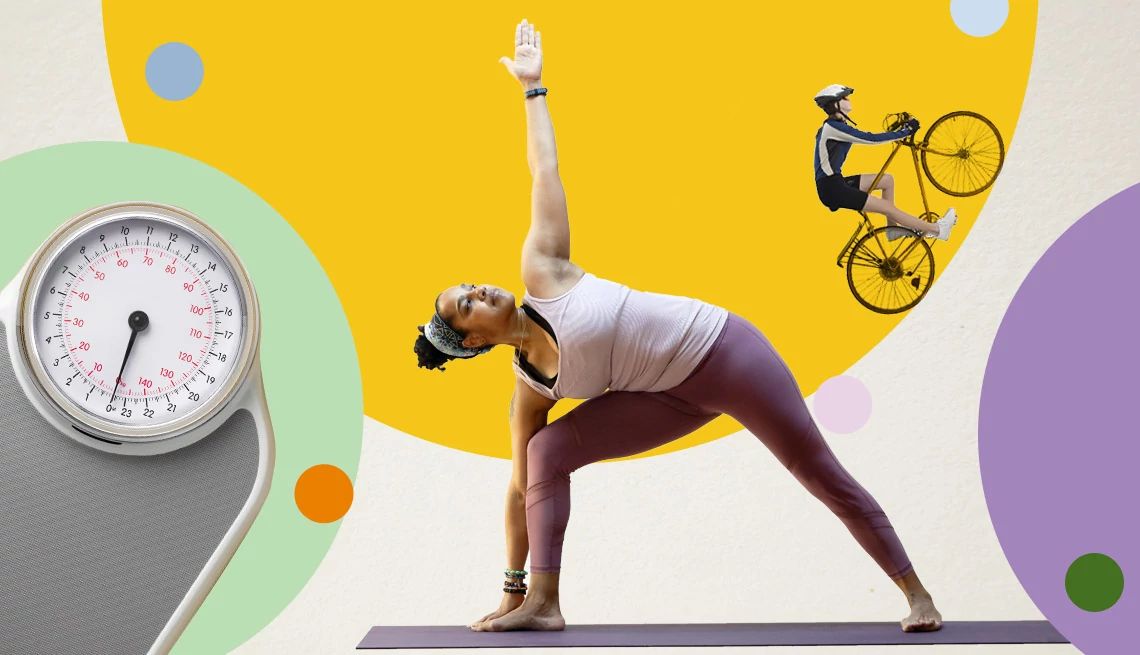AARP Hearing Center


The best exercise for losing weight? The one you can stick with. Research shows you’re more likely to keep walking, running, swimming, cycling — or whatever activity you’ve placed at the center of your move-to-lose goal — if you enjoy doing it (or at least don’t dread it).
But keep in mind: Exercise, even when it’s an activity you enjoy, is only part of the losing equation. “One of the things we see in the research is that a combination of diet and exercise is the most successful for long-term weight loss,” says Anthony Wall, an exercise physiologist and certified ACE (American Council on Exercise) personal trainer. “You can train really hard, but if your nutrition isn’t where it should be, then you’re going to find you have challenges losing weight.”
Of course there are vast benefits to exercise beyond weight loss, including improved cardiovascular health, better mobility, fall prevention and even reduced cognitive decline when we age. Exercise can also boost energy, help with sleep and reduce stress, among many other benefits.
Keep reading to learn more about eight easy exercises for losing weight and bettering your health.
1. Walking
150. That’s the number of minutes of moderate-intensity activity per week the Centers for Disease Control and Prevention (CDC) recommends for adults. Brisk walking is arguably the best way to check that box. It requires no special skill, no special equipment (unless you consider comfortable sneakers special or, for that matter, equipment) and it adapts to virtually any schedule, any climate, any fitness level, any age. Walking does it all -- you lose body fat and gain muscle mass. In a study published in 2022 in Nutrients, post-menopausal women lost body fat with walking, either fast or slow.
2. Strength training
It almost seems unfair: Your current weight loss efforts are influenced by a physiological change that kicked in decades ago. Around age 30, your muscle mass began to decrease and has continued its decline ever since. In fact, research suggests we all lose around 3 to 8 percent of lean muscle mass per decade; the rate of decline picks up after age 60. Why does that matter? Besides contributing to an increased risk of falls, that dwindling muscle mass impacts the way you burn calories.
“As we age, our muscle mass naturally decreases,” says Sabrena Jo, Ph.D., ACE Senior Director of Science and Research. “Because muscle tissue is more metabolically active — meaning it burns more calories — than fat tissue, the loss of muscle mass reduces the body’s resting metabolic rate, meaning fewer calories are burned at rest. In part, this makes weight loss more challenging for those over 50.”
Challenging, but far from impossible. In fact, a large review of studies published in 2023 in Advances in Nutrition found that the most effective weight loss strategy for overweight or obese people ages 55 to 70 involved strength training, in addition to calorie cutting.




































































More From AARP
Got a Minute? 5 Easy Exercises to Try Now
Get the benefits of exercising without leaving your homeTo Get a Better Workout, Play Like a Kid
The perks of making your exercise routine funThe #1 Exercise to Do as You Get Older
If you have time for only one exercise, fitness experts say, try this
Recommended for You